Little cracks can lead to big problems—fast. Making sure you have the proper RV sealants, correctly applied, can save you a lot of headaches down the road.
RV Sealants and Roof Sealants – LCW Product Recommendations
At Leisure Coachworks we keep a variety of products on hand to deal with cracks, broken seals, and seals that just aren’t doing the job. We check the seals carefully on every single project, upgrade, repair, or service.
Before we do anything else, we need to start with a clean surface. Removing debris and oil with a basic auto prep is always our first step.
Next up is choosing the correct sealant for your project. There are a lot of sealants out there to choose from and we’re going to introduce you to the ones that we use at Leisure Coachworks.
We use an RTV silicone sealant around most exterior windows. ProFlex clear sealant goes on a painted exterior so it doesn’t cover up the paint job. Sikaflex 221 is white. It’s for white exteriors and can be used on the entire coach.
Moving on to roof sealants we have an Alpha sealant for a TPO rubber roof. The XTRM self-leveling sealant is used on PVC roofs.
The final sealant we use is a Dicor sealant specifically for Dicor roofs. All of these products are designed and used to prevent one thing: water damage.
Preventing Water Damage with RV Sealants
Water causes far more damage than even accidents. Unless you keep your RV covered at all times, it’s going to encounter weather. Water damage happens quickly and there are many points of entry that need to be regularly checked. The last thing you want is for a simple leak to lead to serious damage to your RV or motorhome.
Roofs in particular have a lot of potential leak areas. Checking around screws and at joints is critical to keeping water from getting into the walls and causing delamination. Remember to have the proper sealants on hand. A roof joint and the area around a screw may require different roof sealants.
Leisure Coachworks leak repair tape is a good choice for a crack from a front cap to a roof. It allows everything to flex so is less likely to crack. Some windows aren’t completely sealed, but it’s still vital to maintain the seals that are required.
The best way to avoid water damage is to regularly check the integrity of your seals.
Walk around your whole RV and check every area of transition or penetration. Windows, awnings, roofs, front caps, end caps.
Make it a priority to know where you have RV sealants and what areas are at risk for cracks and other damage. Being familiar with the location of all of your sealants makes your sealant check both quick and effective.
Doing that thorough check (it can take as little as 15 minutes) twice a year can save you from the inconvenience and expense of a major water damage repair.
Use the proper RV sealants and RV roof sealants for the best results. The most important thing is to get the sealant on and prevent leaks, even if your first try doesn’t look great. If you don’t love how it looks, bring your RV in and we’ll help you make those seals look great and we’ll help you check their integrity.
Don’t take the risk of major water damage when a quick, regular check of all your RV sealants can prevent the problem. Call or stop in today for help or advice on choosing and applying the right sealants for your RV.

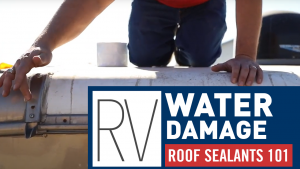
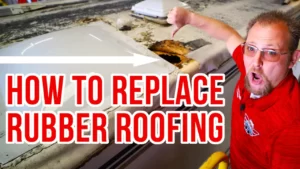
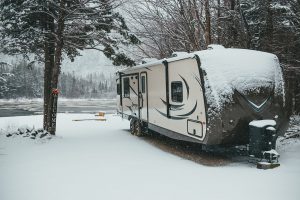
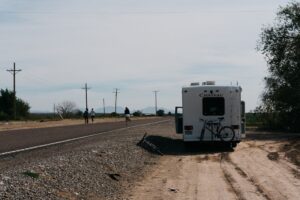
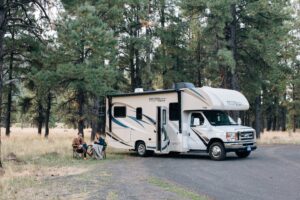
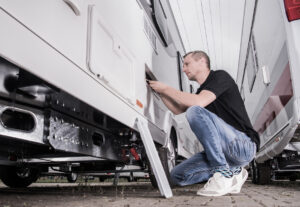
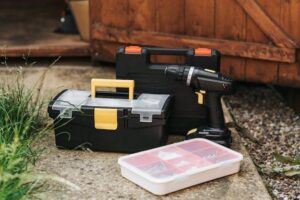
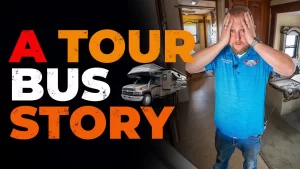

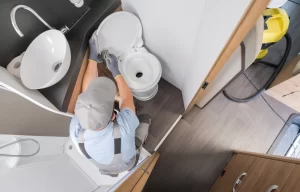
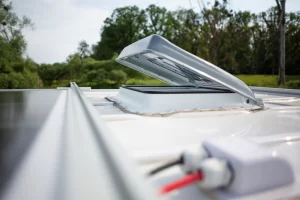


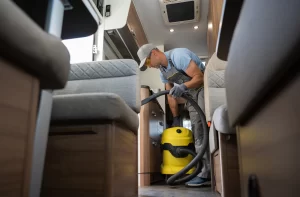
1 Comment
Ponding water is the main issue my RV roof faces and to deal with this, I always carry a bucket of RV Roof Magic that gives my RV roof a new look for a fraction of a cost of roof replacement. DIY friendly product (RV Roof Magic) rubber roof sealant restores, and resolves issues like leaks, cracks, peeling off, and it’s a primer-free, single-coating. RV Roof Magic is a long-lasting sealant, and its cost is fair, considering that I’m practically getting a brand-new roof. It can be applied with a 3/8-inch nap roller. It’s the only sealant with a 10-year manufacturer’s warranty.